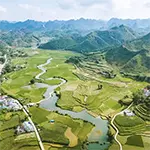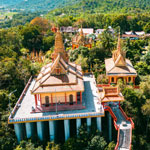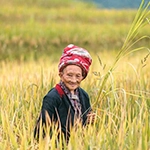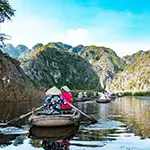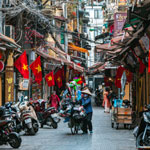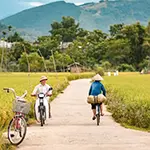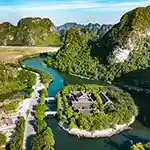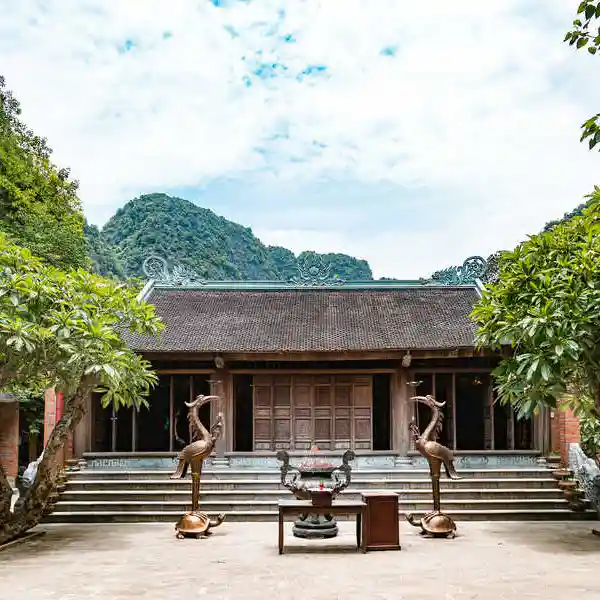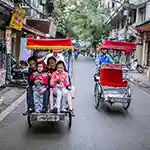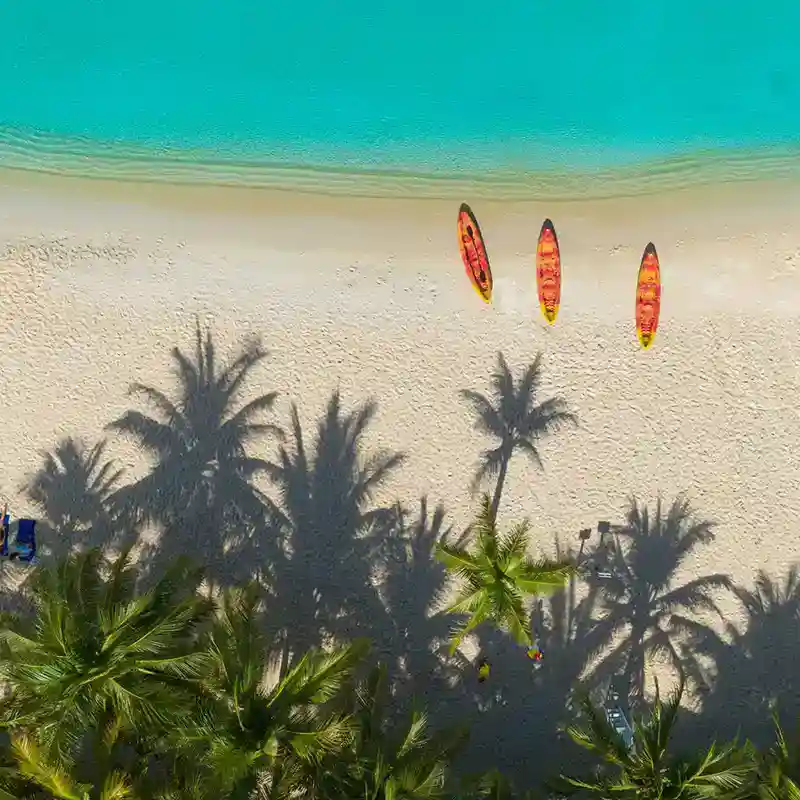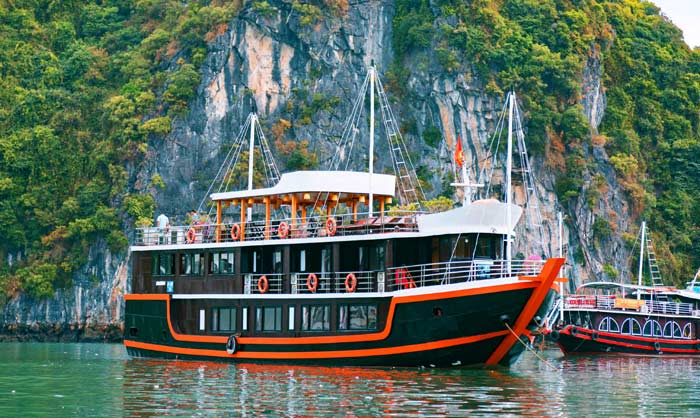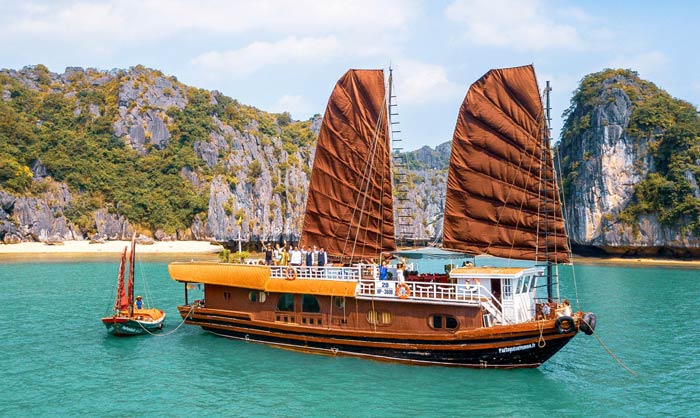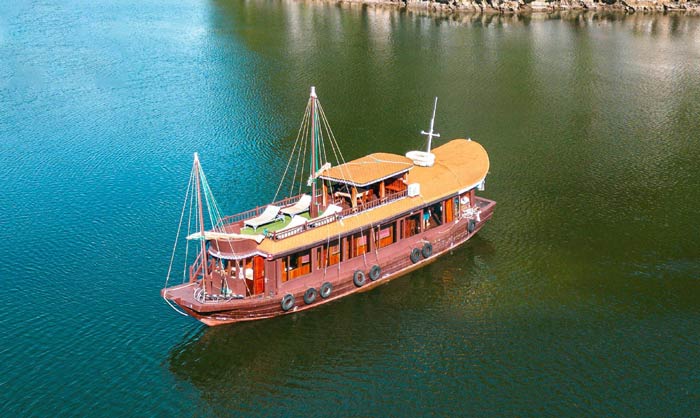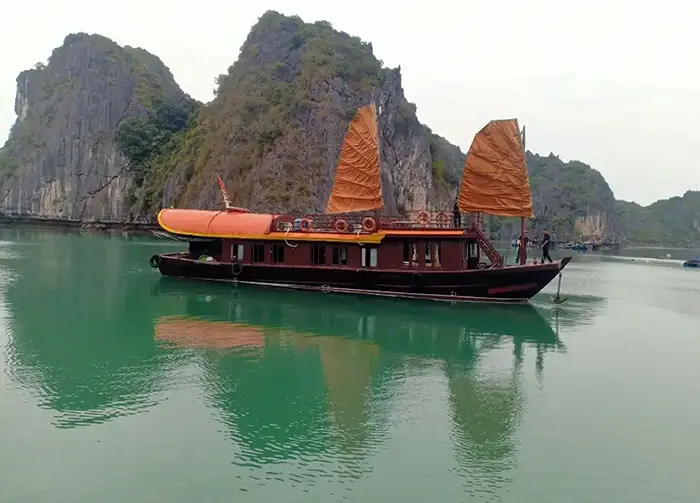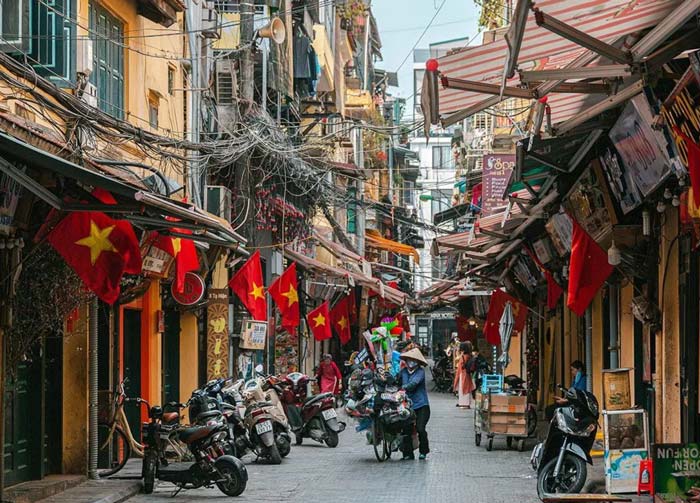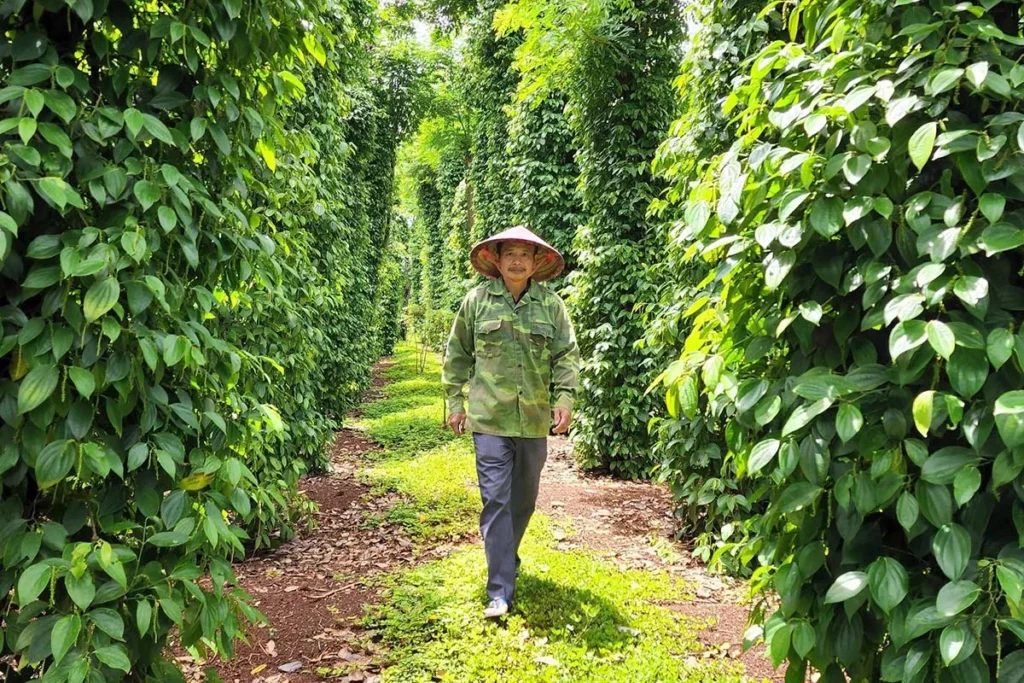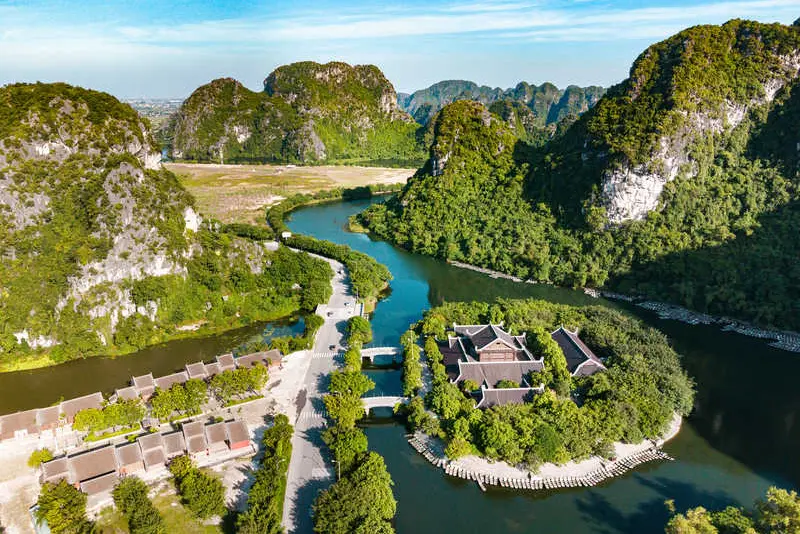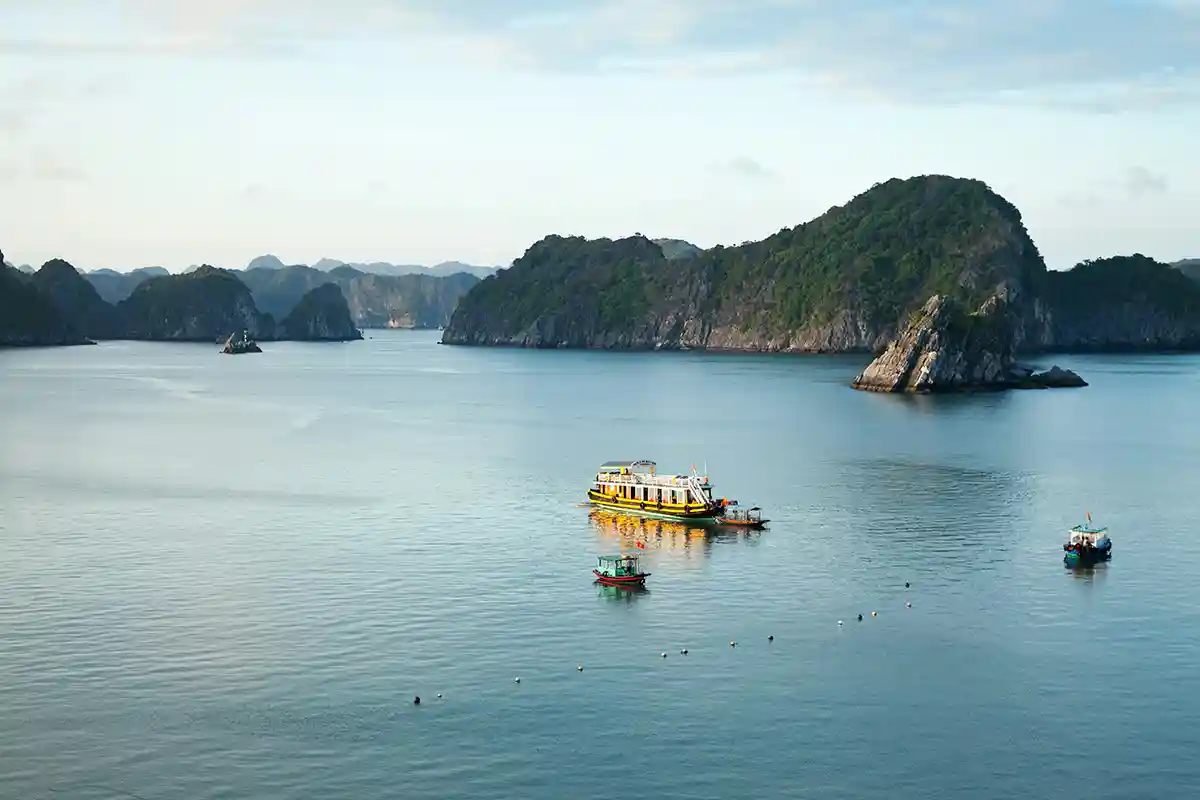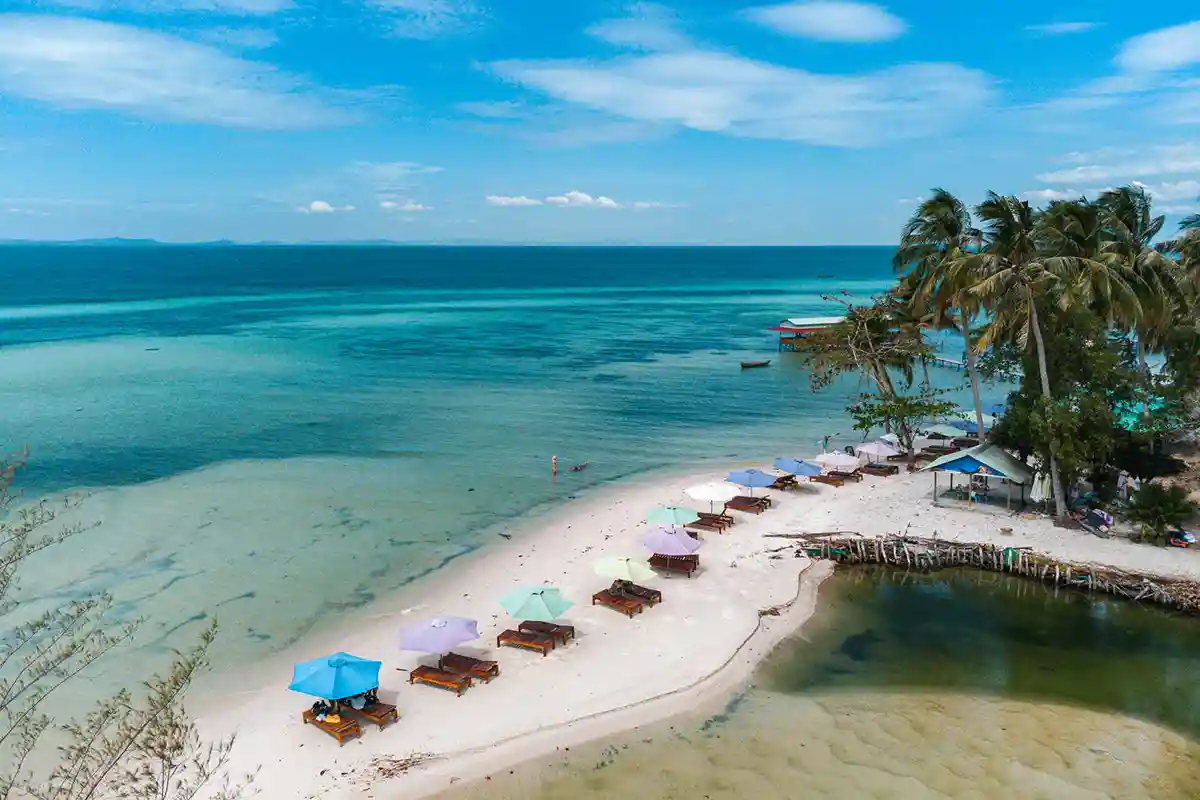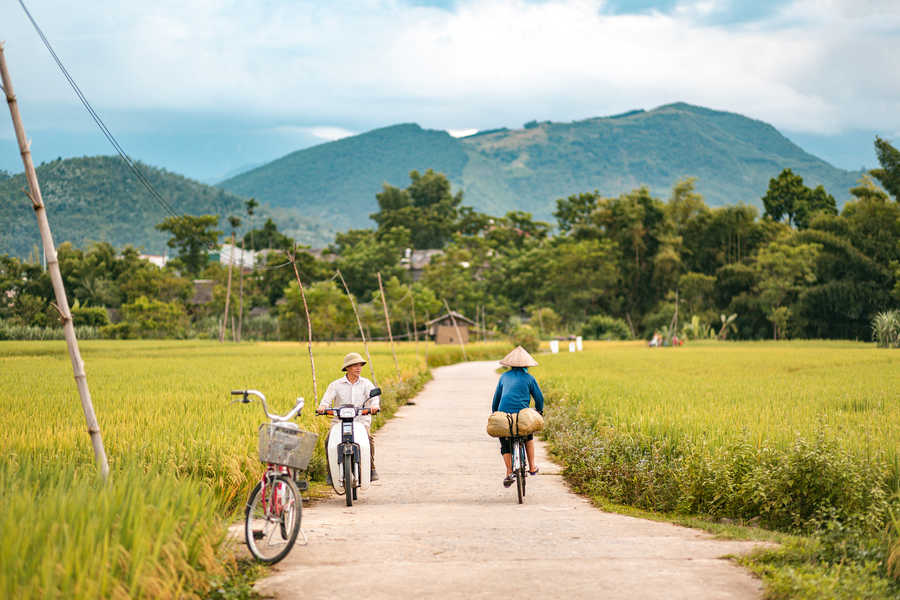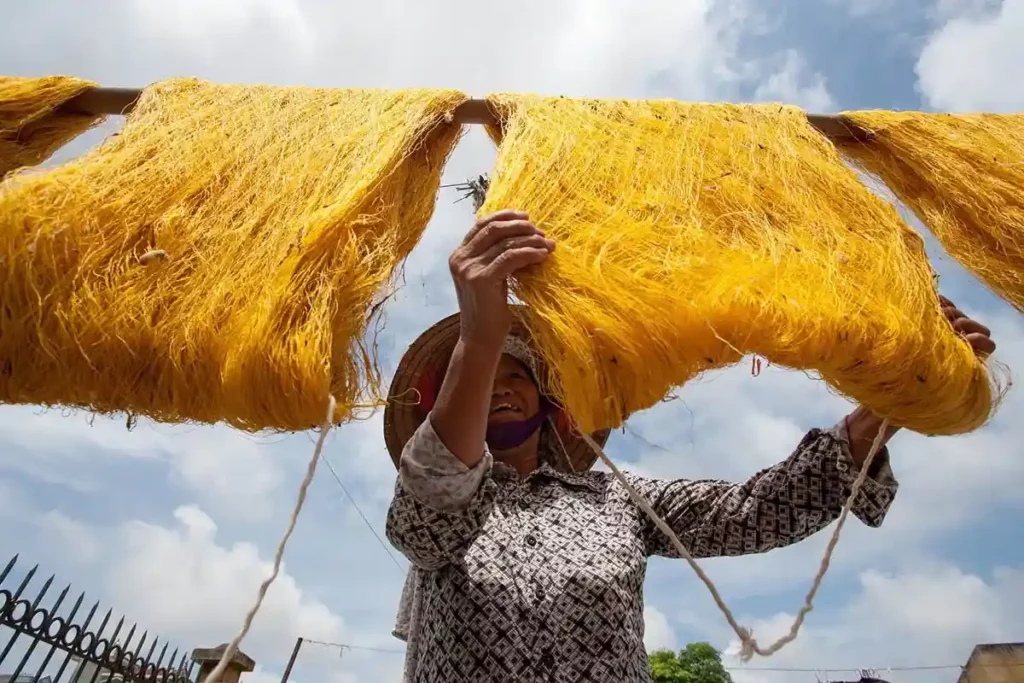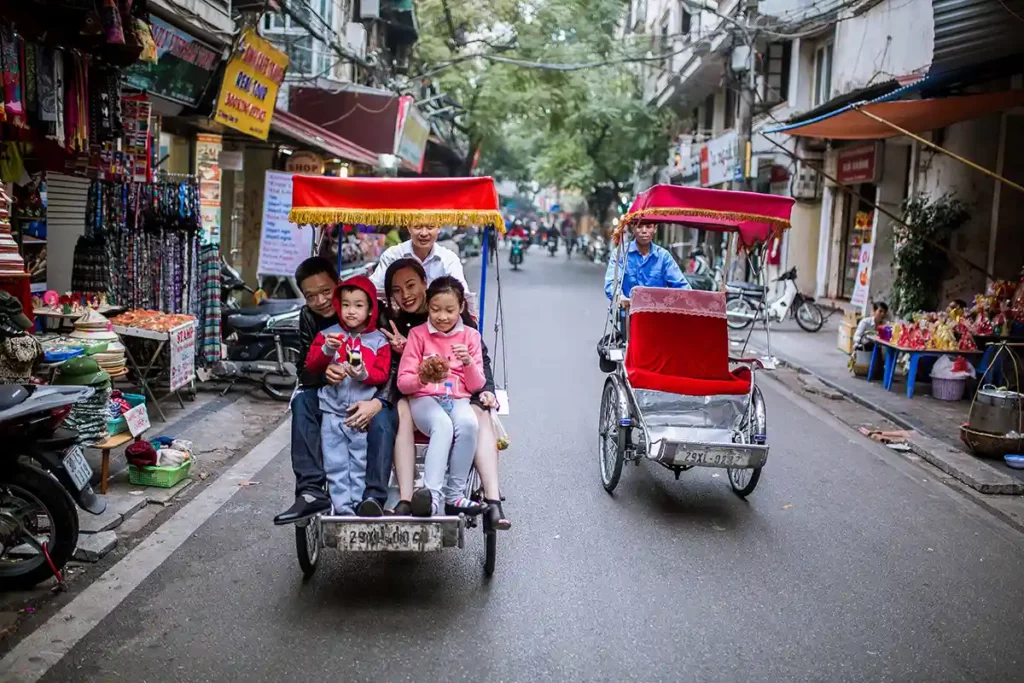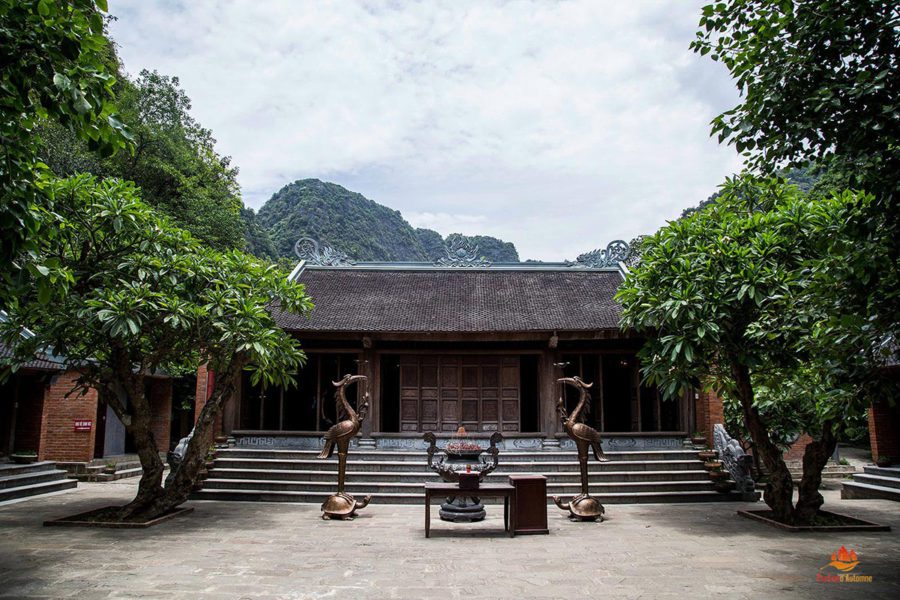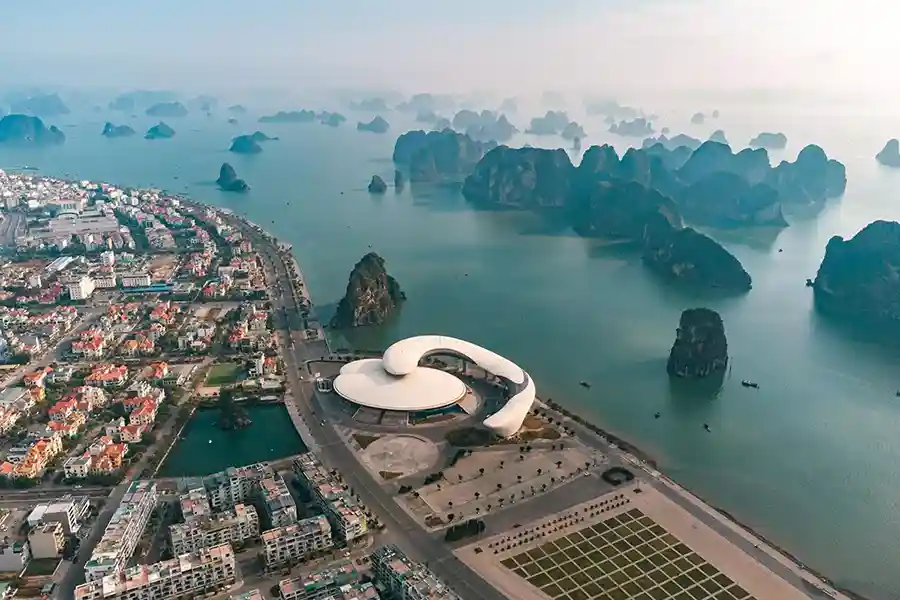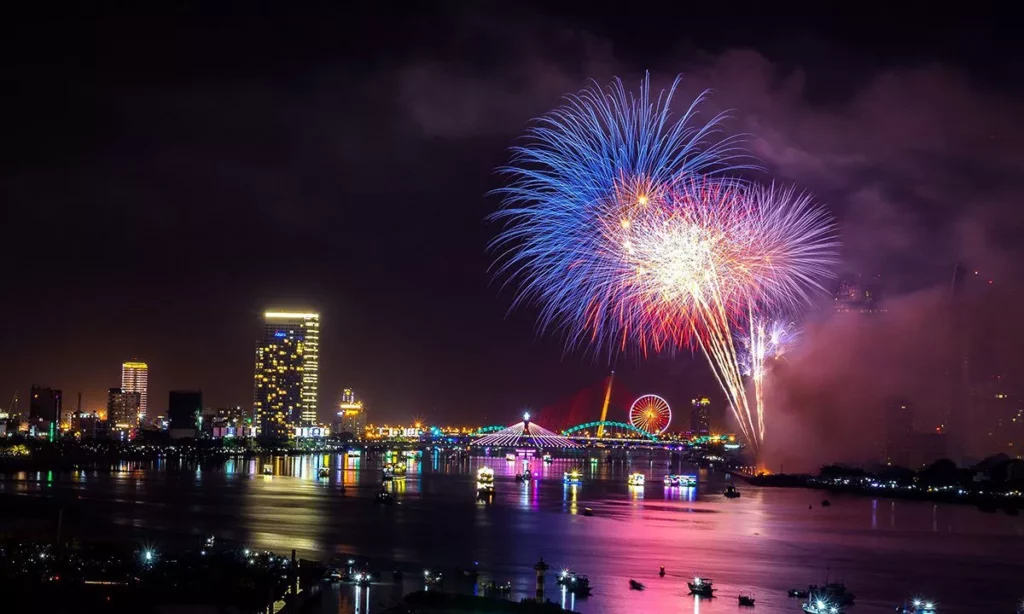In this article, discover all the answers to your questions about Ha Giang Province.
Why and how should you travel to Ha Giang? What is the best season to visit the province? Which destinations should you prioritize? Where to stay?
Still little known compared to Sapa, the province nevertheless boasts magnificent landscapes that will enchant travelers.
Contact us to organize your stay on site.
Presentation of the Ha Giang Region
Ha Giang is the name of the province located at the northernmost tip of Vietnam. It shares borders with four other Vietnamese provinces (Cao Bang, Tuyen Quang, Lao Cai, and Yen Bai) as well as with China.
One of the province’s unique features is the “Dong Van Karst Plateau.” Spanning more than 2,000 km² and covering four districts of the province (Quan Ba, Yen Minh, Dong Van, and Meo Vac), this plateau is the largest in Vietnam. Listed since 2010 as part of UNESCO’s Global Geoparks Network (GGN), this area offers fascinating, wild natural landscapes.
As you will see, Ha Giang is not limited to its “karst plateau.” The province also boasts many other equally impressive sceneries, such as terraced rice fields and dizzying mountain passes.
Long overlooked by visitors, the region is now slowly opening up to tourism, much to the delight of travelers seeking breathtaking natural settings and encounters with ethnic groups preserving their ancestral cultures. Its winding roads and raw landscapes make Ha Giang a perfect destination for authentic and adventure-filled journeys.
Where is Ha Giang province?
Here is the region on the map of northern Vietnam.
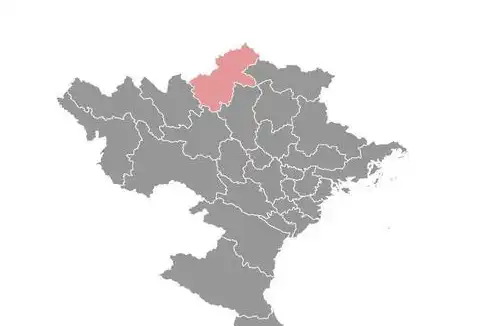
Ha Giang map, Vietnam
Why and how should you visit Ha Giang Province? What can you do there?
Let us take a closer look at the reasons why we recommend visiting Ha Giang Province. We will then explain how to get there and the best ways to explore the region once you arrive.
Commençons tout d’abord par les raisons pour lesquelles nous vous conseillons de visiter cette Province.
Let’s start with the reasons why we suggest visiting this province.
#1. Meet the ethnic groups of Northern Vietnam
#2. Discover breathtaking landscapes
#3. Travel through a little-known and well-preserved region
Meet the ethnic groups of northern Vietnam
The total population of the region does not exceed 800,000 inhabitants, yet it is home to a great diversity of ethnic communities — 17 different groups have been recorded. The largest ethnic groups are the Hmong (around 35% of the total population), followed by the Tay (25%) and the Dao (15%). The Kinh (or Viets) account for only 13% of the total population. However, with the development of tourism in the province, it is likely that this number will increase in the coming years.
This ethnographic composition has evolved over the centuries. From the 15th to the 17th century, the Thai people mainly occupied this territory. It was later ceded to China before being returned to Vietnam by the Chinese Empire at the end of the 18th century.
Today, it is the Hmong culture that is particularly highlighted by the local authorities to promote the province. Every year, a celebration takes place in Dong Van in honor of Hmong arts and traditions.
The ethnic communities of this region are remarkable for their ability to adapt to extremely harsh environments. They continue to live on the Dong Van Plateau and have preserved their traditions for centuries, shaping the mountains through their work — mainly rice and corn cultivation, as well as livestock farming.
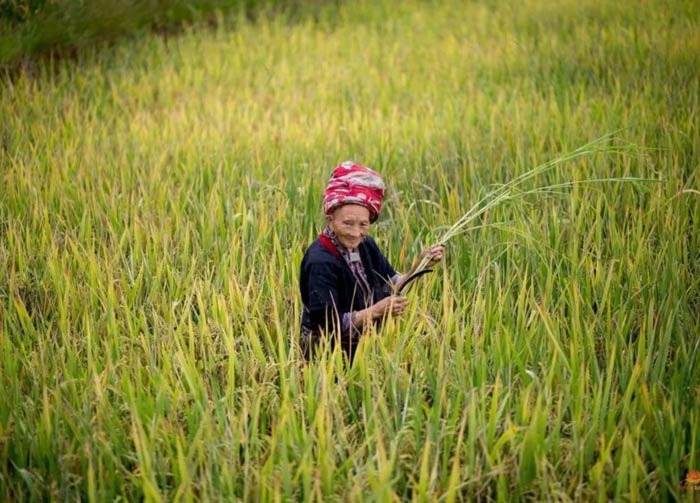
Dao woman, Hoang Su Phi, Ha Giang. Photo credit: Mathieu Arnaudet
Discover breathtaking landscapes
Every traveler returning from the Ha Giang region is left amazed by the landscapes they encountered during their journey. Although the altitude is relatively moderate (Dong Van sits at 1,500 meters above sea level, and the Ma Pi Leng Pass at 1,200 meters), the province’s mountain scenery is both unique and spectacular. The diversity of its landscapes is striking: rice fields blanket the Hoang Su Phi district (in the southwest of the province), limestone mountains dominate the Dong Van Plateau, and more fertile valleys, such as Du Gia, lie further inland.
As you travel through the province, you will see the scenery change rapidly — much to the delight of photographers.
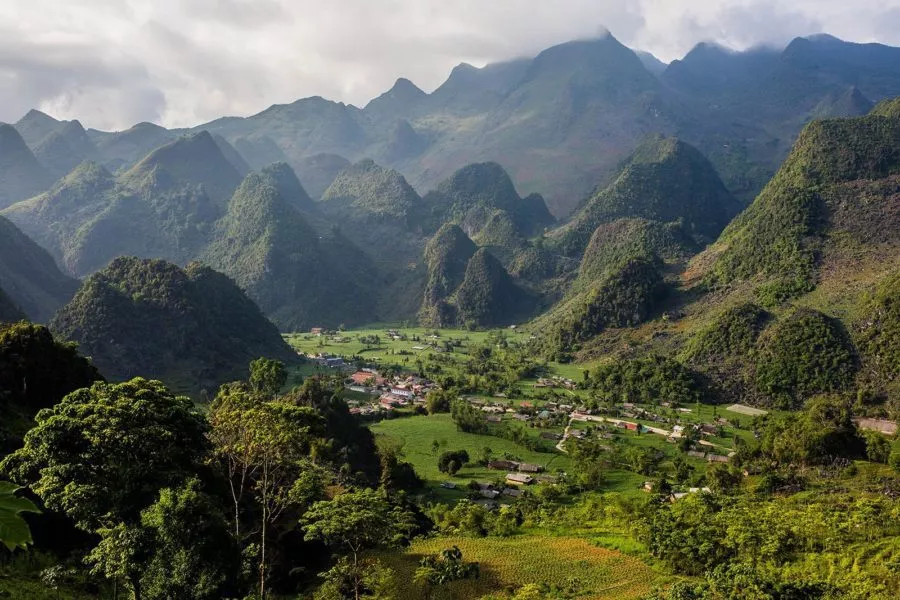
Mountain road on the Dong Van Karst Plateau in Ha Giang, Vietnam. Photo credit: Mathieu Arnaudet
Travel through a little-known and well-preserved region
Unlike Sapa, which has seen a surge of both foreign and Vietnamese tourists in recent years — to the point, it must be said, of disfiguring the town itself — Ha Giang has remained untouched by mass tourism. Its appeal does not lie in leisure tourism; exploring Ha Giang Province must be earned, and that is precisely what makes it so rewarding! Nevertheless, the famous “Ha Giang Loop” has become popular, especially among young travelers eager to tackle the province’s winding roads by motorbike. While traveling along this loop, you will meet many of these adventurous travelers. However, few venture into the villages to meet the local communities.
That is what makes our tours so special. Accompanied by a guide and often a local escort, you will go where few people ever set foot in the province. In many places, you will truly feel like you’ve entered “uncharted territory.”
Moreover, the Dong Van Geopark is now recognized by UNESCO for its geological richness, which commits the authorities to protecting and preserving this unique environment. The project also includes social and economic initiatives to support local communities.
How to travel to Ha Giang province
There are two main ways to get to Ha Giang:
1 – The first and most comfortable option is to include the car journey in your itinerary from Hanoi. We can arrange stops along the way so that the trip doesn’t feel too long;
2 – The second option, more economical but also more tiring, is to take a day or night bus (a sleeper bus in this case) from Hanoi to Ha Giang City. In about 7 hours, and for around ten euros, you’ll arrive in the provincial capital.
The Ha Giang Loop: Discover Ha Giang by motorbike or car
Once there, a car or motorbike is essential to complete the famous “Ha Giang Loop.”
Here is the itinerary:

Ha Giang loop itinerary, Vietnam
This itinerary will take you through the must-see destinations: the Quan Ba and Ma Pi Leng passes, the Dong Van Karst Plateau, and the villages of Lung Tam and Du Gia.
The loop covers around 350 km of winding mountain roads. We recommend spending at least 4 days on this journey, as the distances feel longer due to the road’s many curves.
>> See our dedicated article about the Ha Giang Loop.
Hiking and trekking: taking your time to explore villages and their inhabitants
Along this route, it is best to allow for rest periods and time to explore the surroundings on foot. During our private tours, we offer” hikes and treks either along the “Ha Giang Loop“, in the areas around Du Gia and Dong Van, or in the Hoang Su Phi district.
Hoang Su Phi is the ideal destination for walking in nature and meeting minority ethnic groups. To reach this district, a car or motorbike is necessary. Once there, you can set out with your guide for several days of trekking, discovering breathtaking landscapes and the welcoming communities living in remote areas.
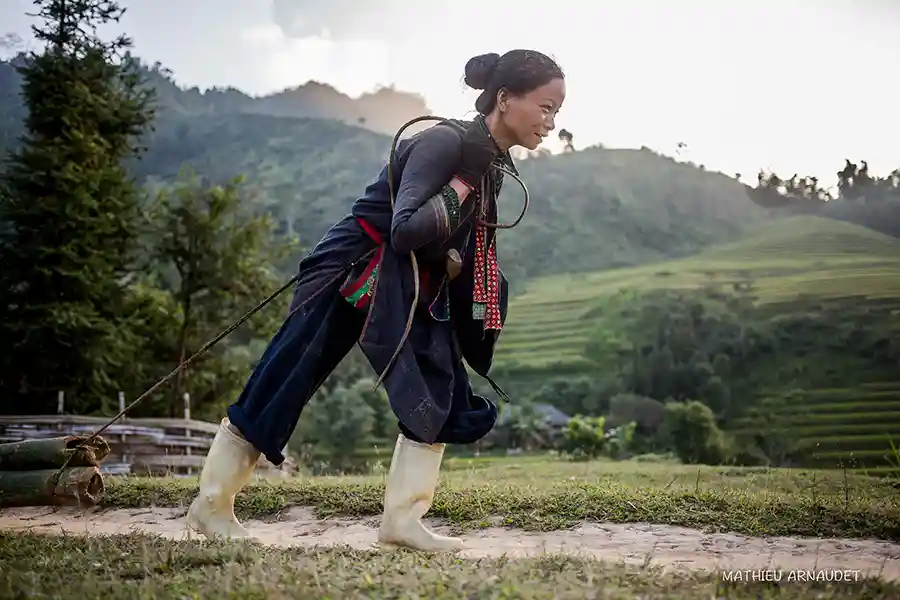
Hoang Su Phi, Vietnam. Photo credit: Mathieu Arnaudet
Destinations to explore when traveling in Ha Giang
We’ve already mentioned some, but now we’ll provide more details on the places you shouldn’t miss during your stay in Ha Giang Province.
Nam Dam village and the Quan Ba pass
Nam Dam Village is often the first stop, or even the starting point, of the “Ha Giang Loop”. From Hanoi, for example, you could choose to spend your first night with a local family in this village, located just 45 km from Ha Giang City. You will be welcomed by a family from the Dao ethnic group who have opened their doors to travelers. This will be your first encounter with the region’s minority communities. The village is located in the Quan Ba district, known for its mountains (“Fairy Mountains”) rising in the middle of the valley. The view from the road is one of the iconic images of Ha Giang Province. Your guide will take you to the “Heaven Gate”, the gateway to the Dong Van Geopark.
Upon arrival in Nam Dam, you can explore the surroundings with your guide and even go on a hike the next day to reach, for example, Kho My Cave, located 25 km from Nam Dam.
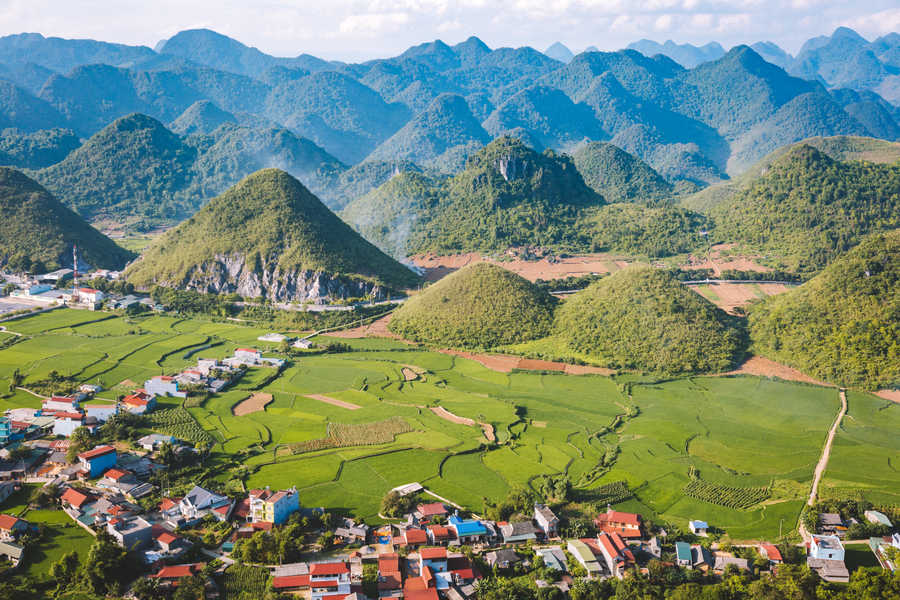
Quan Ba pass, Ha Giang, Vietnam. Photo credit: Mathieu Arnaudet
Lung Tam village
Lung Tam Village is located just 18 km from Nam Dam. It is known for its traditional weaving. You can visit a cooperative established in 2001 to revitalize and promote the village’s traditional craftsmanship.
In 2009, the cooperative even received financial and technical support from a French NGO called BATIK International. Thanks to this partnership, the cooperative was able to organize training programs and create jobs. Its equipment was also modernized.
Feel free to purchase a small souvenir at the cooperative’s shop!
The Dong Van Karst Plateau
The Geopark covers over 2,000 km² and spans four districts: Quan Ba, Yen Minh, Dong Van, and Meo Vac. Along the main road, you will see limestone peaks following one another, each more impressive than the last. In recent years, researchers have discovered true “geological relics” (sediments and fossilized animals), which earned the park recognition by the Global Geoparks Network. It is one of only two recognized geoparks in Vietnam, alongside Non Nuoc in the neighboring Cao Bang province.
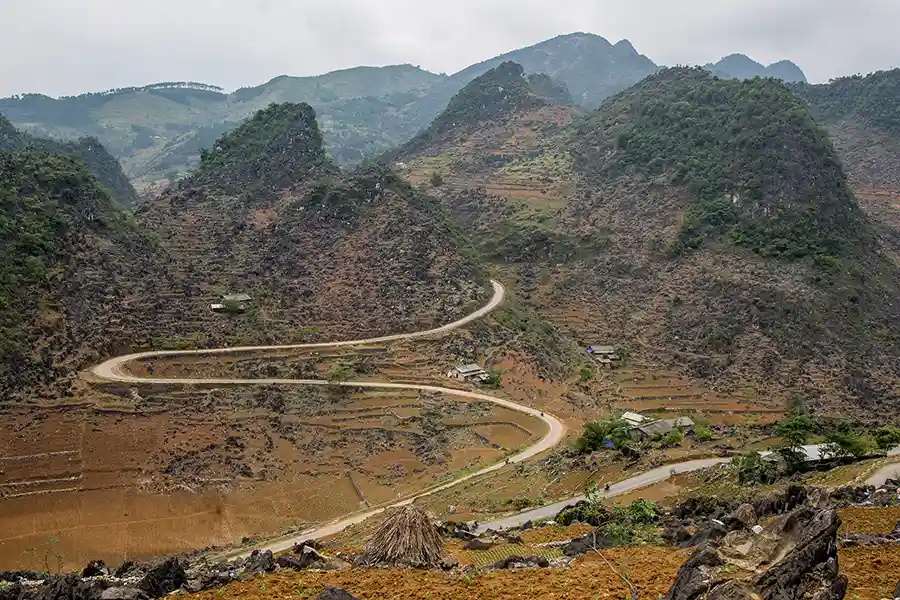
Road through the Dong Van Plateau, Ha Giang. Photo credit: Mathieu Arnaudet
The Ma Pi Leng Pass
This pass lies on the road between Dong Van and Meo Vac, a route known in Vietnamese as “Hanh Phuc,” meaning “the Road of Happiness.” Why “happiness”? Because this road, built in the 1960s, greatly improved the daily lives of the local inhabitants. Before its construction, the only way to travel between these two towns was on horseback. Interestingly, “Ma Pi Leng” literally means “the horse’s nose.”
Although the pass is not very high, as travel writer Olivier Page noted, “at the end of a narrow, winding road, one has the strange sensation of being 4,000 meters above sea level” (see his interview for Le Routard). Once you reach the top, you’ll be treated to a truly magnificent sight. You’ll feel incredibly small before the vastness and depth of the landscape.
This canyon, through which the Nho Que River flows, is called Tu San. You’ll likely find yourself gazing at it for long minutes, feeling as if time itself has stopped.
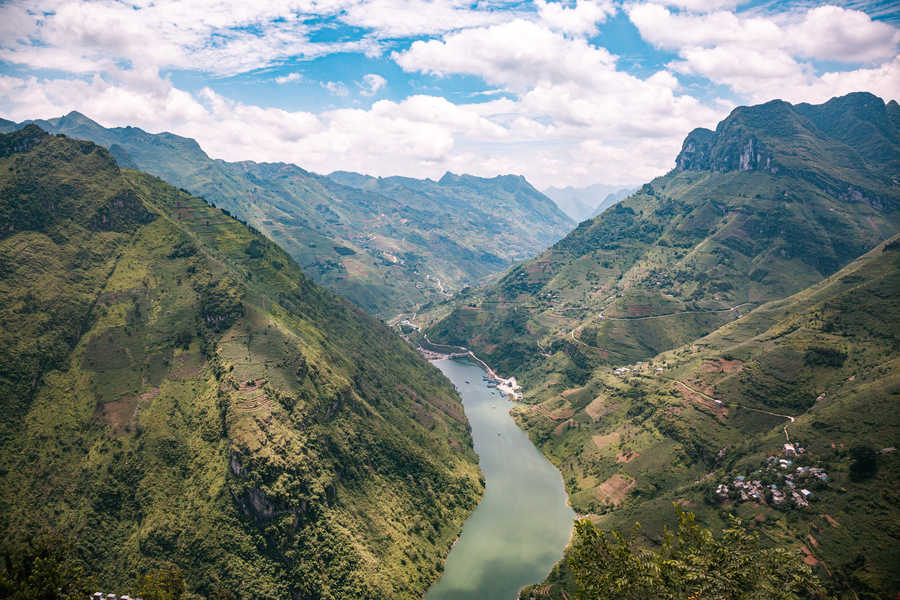
Ma Pi Leng pass, Ha Giang, Vietnam. Photo credit: Mathieu Arnaudet
Du Gia village
The village of Du Gia is a little green paradise in the heart of this limestone region! In 2015, the Vietnamese government designated the Du Gia Nature Reserve as a national park to preserve the area’s natural resources (source: Courrier du Vietnam). In our opinion, the small village of Du Gia is the perfect starting point for hikes through the nature reserve.
Don’t miss the gathering of the region’s ethnic minorities at the end of May, when the village transforms into a vibrant and colorful market!
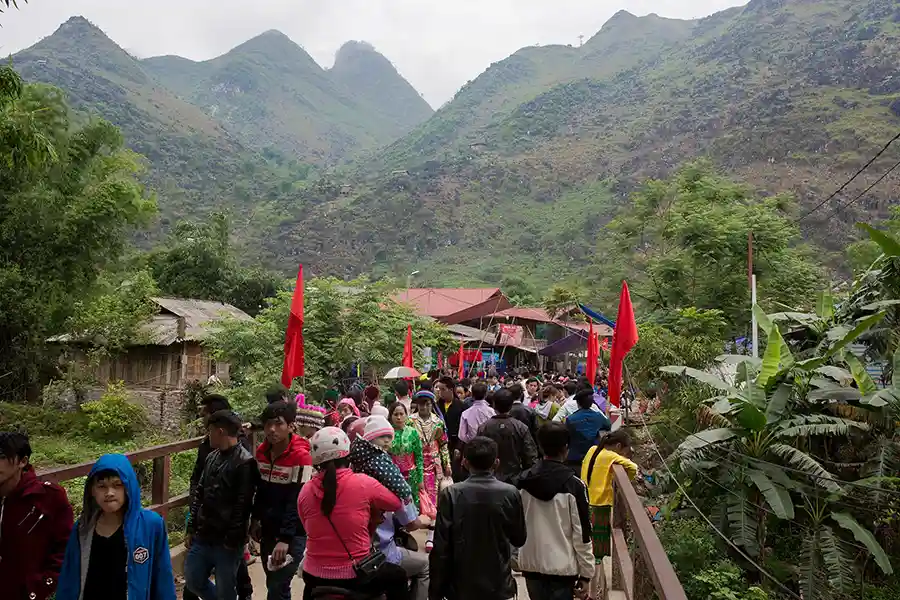
Du Gia village, Ha Giang, Vietnam. Crédit photo: Mathieu Arnaudet
Hoang Su Phi district: The hidden terraced rice fields
Hoang Su Phi District is located in the western part of Ha Giang Province. We’re stepping away from the “Ha Giang Loop” to tell you about this destination which, in our opinion, should be included in every trip to Vietnam!
Hoang Su Phi is a mountainous district famous for its stunning terraced rice fields. Just like in Sapa or Mu Cang Chai, the local communities—particularly the Dao people—have carved the mountainsides into spectacular rice terraces.
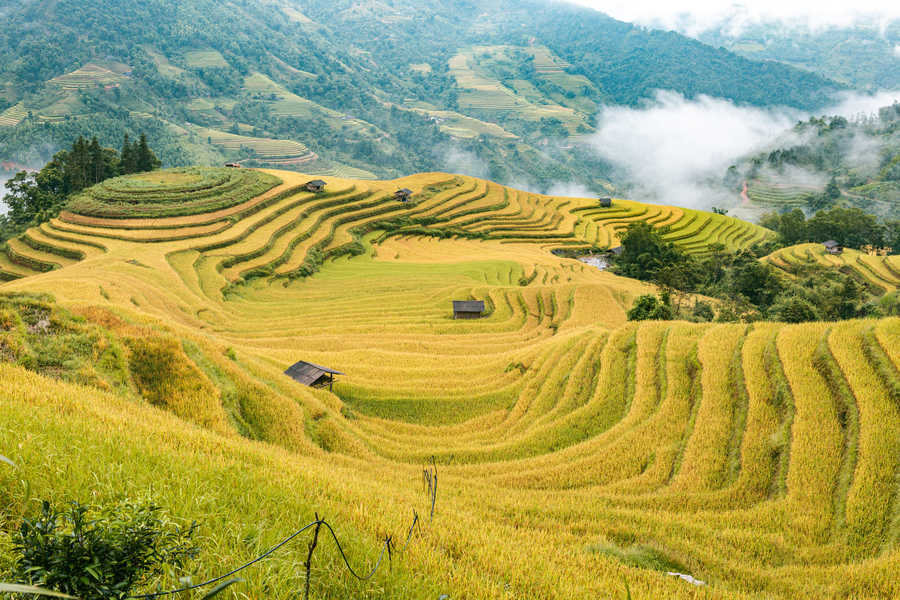
Landscape in Hoang Su Phi during the rice harvest (late September). Photo credit: Mathieu Arnaudet
It’s a stunning area, perfect for multi-day hikes. The district is home to several ethnic groups, and with our tour, you’ll have the chance to meet many of them.
As an off-the-beaten-path destination, you can expect wonderful moments of sharing and connection with the local communities. That’s exactly what Vincent experienced last December during a six-day trip.
The result is this moving video:
Festivals: A unique way to discover Ha Giang
Festivals are becoming increasingly popular in Vietnam as a way to showcase the unique cultures of each region. This is especially true for Ha Giang Province, which hosts a number of fascinating festivals that offer travelers an authentic and unusual glimpse into local traditions.
Each ethnic group has its own celebrations. The Pa Then people, for example, hold an annual “Fire Dance Festival” that begins in mid-October according to the lunar calendar (around November–December on the solar calendar). The festival’s opening ceremony is spectacular, as young villagers leap into the flames and dance without feeling any pain, believed to be protected by the spirits that possess their bodies.
The Lolo people, on the other hand, celebrate the “Prayer for Rain” every year at the end of the dry season (around March on the solar calendar). Visiting the Lolo ethnic group at this time (in the Meo Vac district) allows you to witness the rituals of a people who continue to honor their ancient animist beliefs.
There are also other festivals, such as the Buckwheat Flower Festival. After the rice harvest comes the buckwheat flower season in October. The bloom lasts only a month, covering the hills in a delicate pink hue. So, if you miss the rice harvest in Hoang Su Phi, don’t miss the buckwheat flower season!
The markets of Ha Giang: at the heart of the daily life of ethnic groups
The markets of Northern Vietnam are held regularly and bring together local people dressed in their traditional costumes. The Ha Giang Province is no exception, and we will be delighted to help you discover at least one market during your stay.
For example, you can visit the Lung Phin Market in the Meo Vac district or the Hoang Su Phi Market, which takes place every Sunday. Near the Chinese border, you can soak up the atmosphere of the Xin Man Market.
We will schedule your trip to the province according to these markets, vibrant and colorful gathering places that lie at the heart of daily life in the mountains of Northern Vietnam.
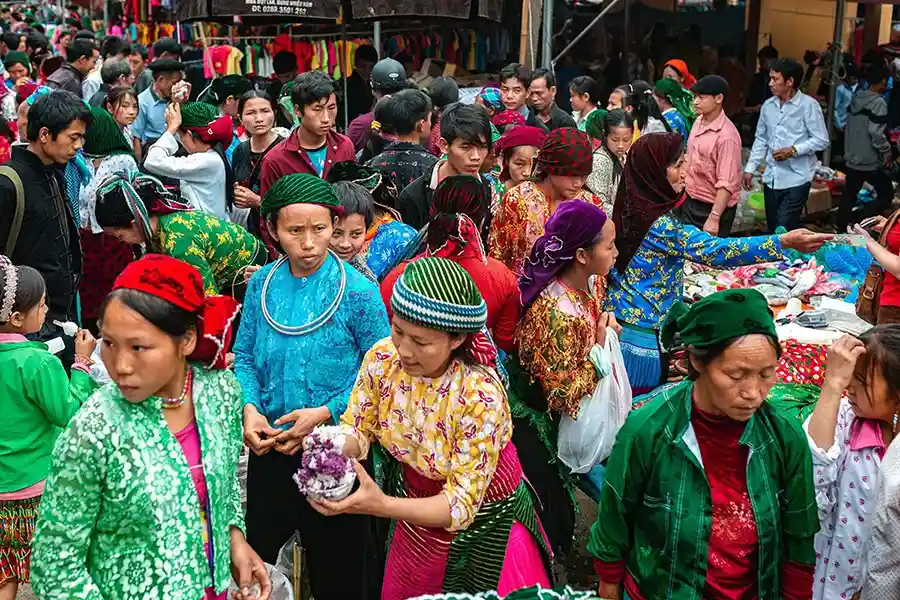
Du Gia market, Ha Giang, Vietnam. Photo credit: Mathieu Arnaudet
When to visit Ha Giang? Which season should you choose?
There are truly four seasons in Northern Vietnam. From December to March, you’ll need to dress warmly to visit this mountainous region located, as a reminder, in the far north of the country. Spring (March, April, and May) and Autumn (October and November) are the best times to travel along the Ha Giang Loop. The temperatures are pleasant, and you’ll avoid the heavy rains that fall during the summer months (June to September).
However, to visit the Hoang Su Phi district, you should be ready to get a little wet in order to enjoy its most beautiful landscapes, from June to October. The rice harvest takes place in September in Hoang Su Phi, and we can only recommend this period to witness local families working together in the fields!
Where to stay in Ha Giang: Some recommended addresses
In Quan Ba, an association has been established, bringing together several homestays in the villages of Nam Dam, Ngo Luong, and Pa Co. We have connections with several families who will welcome you warmly! For a bit more comfort, we can also recommend the Dao Lodge, built with the support of the Swiss NGO Caritas.
In Dong Van, you can enjoy a bit more comfort with upgraded homestays, such as the Bui family homestay or the Dong Van B&B.
In Du Gia, the small village now hosts several homestays, including the Du Gia Homestay, located off the main road
Finally, in Hoang Su Phi, we highly recommend spending a night at Panhou Village, which we consider the most beautiful ecolodge in Northern Vietnam! The property blends perfectly with its surroundings. A new ecolodge, Hoang Su Phi Lodge, has also recently opened. During your hikes, you will then stay with local families in the villages for a fully immersive experience!
Ha Giang or Sapa: Which should you choose?
We’ll end this article with a question that many of you are probably asking: which one should you choose—Ha Giang or Sapa? Let’s reframe the question: do you even need to choose?
Not necessarily! The landscapes of Sapa and the Ha Giang Loop are very different, and it would be a shame to miss out on a trip that includes both destinations. However, the question might arise if you are deciding between Sapa and Hoang Su Phi. While the landscapes may be similar, the warm welcome you’ll receive in Hoang Su Phi will stay with you! Hoang Su Phi District is definitely our favorite in Northern Vietnam.
If you want more guidance to help make your choice between Sapa and Ha Giang, be sure to read our guide: Sapa or Ha Giang: Which should you prioritize?

